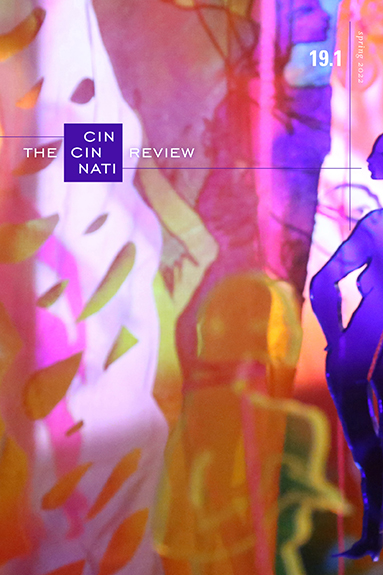We are pleased to share this review by Tod Goldberg about Elmore Leonard’s rules for writing fiction, as evident in his novel Out of Sight (Delacorte, 1996). The essay appeared in Issue 19.1 as part of a special multigenre review and essay feature on the ethics and craft of crime writing (read the entire feature here):
Out of Sight. Elmore Leonard. Delacorte, 1996. 296 pp. $22.95 (cloth).
Not long ago, I met up with an ex-con named Joe for coffee. It was the summer, and Northern California was on fire. While I waited for Joe, a friend texted me to say that her parents were refusing to leave Lake Tahoe, even though the fire was creeping closer to their home. They still had one road they could use to get off the mountain, she said, so they felt safe enough. I looked up at the sky. Ash drifted down in fine gray flakes, the breeze spreading them around like mist. I was three hours south of the fires, and my lungs felt pinched. That sounds like suicide, I wrote to my friend. Why would they stay? She responded with a hands-up emoji.
My crime brain started running through scenarios. Why would they stay? Maybe they’re hiding out from the Mob. Maybe they’re master criminals and set the fires knowing that if they’re the last people out, they can rob all the houses surrounding them and get away with it. Maybe they love their house so much that they’re willing to die inside it . . . so as to keep authorities from finding the bodies buried in the yard.
This is how I think.
A Subaru wagon pulled up, and out came Joe. I’d like to describe him in some poetic way, but the fact is, if you saw him, you’d think: That’s the last guy on the planet I’d want to mess with. He’s over six feet tall, weighs a good three bills, and wears sunglasses all the time, so you never know if he’s looking at you or through you. He walks with his head cocked slightly to one side, as if he’s about to ask you a question, and you better have the right answer. He looks, frankly, like he wants to fuck you up and like you’ve got it coming. He spent seven years in Lompoc, two in solitary confinement, and part of him is still there. He robbed banks on the outside, fucked people up on the inside. If this were one of my books, I’d call him an OG.
As soon as Joe came loping across the parking lot, the ions in the vicinity got rearranged. Everyone turned and watched his approach, rabbits noticing a coyote in the distance. Quickly, they began to pack their stuff—jamming phones into purses, clutching keys; a few stood up abruptly without a place to go just yet, only to find Joe standing in the one exit off the mountain, so to speak. Too late, I thought; the fire is here, and none of you are master criminals.
But the other people on the Starbucks patio, they don’t know what I know. That Joe went straight. That he’s spent the last twenty-five years reckoning with his violent nature, writing about it in books and essays, on the screen, even in a podcast. I’ve never actually met the OG Joe.
I waved him over. We did that awkward hug men do that involves punching each other. Even though I’ve spent the last two decades murdering people in books, in real life the crime I most look like I’ve committed is stealing jeans and V-neck polos from Banana Republic. I’m about as threatening as David Schwimmer. I could feel the people around me exhaling. If this guy isn’t scared . . . They took their phones out. They leaned back in their chairs. They sucked caramel almond-milk Frappuccinos through green straws. Joe disappeared inside the Starbucks, placed his order, and came out with an absurd-looking purple concoction.
“It’s my daughter’s favorite, so I thought I’d try it,” he said, loud enough that the woman in the pink sweatsuit sitting adjacent to him laughed knowingly. “It’s horrible.”
More laughter. We then spent the next two hours—with the burning world in the distance—talking about how we were expressing our obsessions these days. Murders. Heists. Beatings. The eavesdroppers moved closer. They wanted to know. A joke, a purple drink, and a partner who can talk a big game but wouldn’t bust a grape in a fruit fight? I was living a scene from an Elmore Leonard novel.
In fact, it reminded me of a scene right out of Leonard’s 1976 novel, Swag, which set the tone for the next thirty years or so of his writing career. In Swag, Leonard establishes “Ten Golden Rules for Successful Armed Robbery,” which is a misnomer. The rules tell you how to have a successful criminal career, not just pull off a single armed robbery—and they’re also how to write an Elmore Leonard novel:
1. Always be polite on the job. Say please and thank you.
2. Never say more than is necessary.
3. Never call your partner by name—unless you use a made-up name.
4. Dress well. Never look suspicious or like a bum.
5. Never use your own car. (Details to come.)
6. Never count the take in the car.
7. Never flash money in a bar or with women.
8. Never go back to an old bar or hangout once you have moved up.
9. Never tell anyone your business. Never tell a junkie even your name.
10. Never associate with people known to be in crime.
Shit. I’d already broken half the rules. Which meant, well, I was about to get caught.
You might have heard about Leonard’s other set of rules—his famous Ten Rules of Writing—which writers and readers alike have taken far too seriously over the years. That list, published in a New York Times column in 2001, is mostly tongue-in-cheek, save for the final admonition: “Try to leave out the parts that readers tend to skip,” which is, in fact, all the things Leonard tells you to avoid in the previous nine rules, including adverbs, the weather, and exclamation points. Honestly, Leonard’s Ten Rules boil down to one good one: Stop sucking.
It’s a shame that Leonard’s Swag rules aren’t as well-known, but the reason is clear: the difference between the two sets of rules is the difference between craft and talent. Anyone can be taught to leave out adverbs in dialogue tags, but not everyone has the talent to write a character who adheres believably to Swag’s rules, which are about behavior and consequence. Following the rules in general is much easier than following either set of Leonard’s. Leave before the fire closes the only road and all that.
The truth, however, is that Leonard was on my mind long before my friend Joe met me for coffee and scared the living shit out of the Bluetooth-earbuds-and-Lululemon set who hang out at the Starbucks in Lafayette, California. I’d spent the previous month diving back into Leonard’s finest novel, Out of Sight, to see how he’d done the one thing I’ve always found most difficult. I’ve used the rules of Swag as loose guidelines for writing since the mid-2000s, when I wrote a series of books based on the television show Burn Notice and then, later, my Gangsterland series, but my biggest challenge is conveying powerful romantic relationships, or at least believable ones, in the context of profound violence and general dark doings. For six decades, Leonard made it safe to combine literary ambition with the more prurient pleasures of writing about people with guns, which is to say he normalized criminals, made it harmless to portray them as funny and weird and thoughtful, as well as violent and distrustful—all of which I’ve tried to do myself. But he also did the unthinkable: He let his characters fall in love. Sure, they often fell in love with the wrong people, but who doesn’t? Misbegotten love is the very height of the human experience, or at least the human literary experience.
Nowhere is this more prevalent than in Out of Sight, Leonard’s thirty-fifth novel, adapted faithfully into a film starring George Clooney and Jennifer Lopez, when both were, to put a fine point on it, Sex Personified. In Out of Sight, Leonard gives us a bank robber, Jack Foley, who needs to escape from prison to make one last score. He asks a loyal friend named Buddy to be his getaway driver (Buddy is a bad man with a gun, but it’s hard to worry too much about a guy named Buddy). It looks like the score’s going to work out, but in comes a US marshal—and instead of some square-jawed “big-city dick,” the marshal is a beautiful woman named Karen Sisco, resplendent in a “thirty-five-hundred-dollar suit” and holding a shotgun. When Buddy sees everything about to go south, he tosses Karen and Jack into the trunk of a sedan: a meet-cute with shotgun and spare tire.
Soon the two are wedged together, speeding away from the penitentiary, talking about their favorite movies (Network) and actresses (Faye Dunaway) and revealing their collective hopes and dreams, making the drive either the world’s weirdest first date or simply an excellent hostage negotiation:
Foley let his breath out and she felt it on her neck, almost like a sigh. He said, “I still think if we met under different circumstances, like in a bar . . .”
Karen said, “You have to be kidding.”
After that, for a few miles, neither of them spoke until Foley said, “Another one Faye Dunaway was in I liked, Three Days of the Condor.”
“With Robert Redford,” Karen said, “when he was young. I loved it, the lines were so good. Faye Dunaway says—it’s the next morning after they’ve slept together, even though she barely knows him, he asks if she’ll do him a favor? And she says, ‘Have I ever denied you anything?’”
I’ve read this scene a hundred times. I’ve watched it an equal number of times in the film. How does Leonard do it? How do these diametrically opposed forces end up falling in love in the trunk of a getaway car? Perhaps it’s because the scene starts with Leonard following all his own rules. By the time the scene ends, though, Foley is so smitten with Karen that he tells her his real name, cops to all the crimes he’s committed, and even gives her his ex-wife’s name, almost as a character reference. Essentially, he stops pretending to be a badass. He becomes, in that trunk, the most human version of himself: vulnerable, willing, open to love. Five minutes later, Karen tries to shoot him—and he’s even more smitten. She’s remained true to the game, in spite of what appears to be attraction. It’s a such a subtle piece of writing on Leonard’s part . . . and it only took him thirty-five novels to get there.
My phone buzzed, and Joe excused himself to get a drink he actually liked. I was hoping it was my friend saying, They’re leaving. The fire is too close. But it was an Amber Alert. A child had been taken. A white sedan. I turned and watched the traffic just like everyone else, all of us now in a real crime novel, one where we could do something, one that had none of the charm of an Elmore Leonard novel, nor of anything I’ve tried to write according to his rules of crime, because he never mentions anything about hurting a child. We all stared for a minute, maybe ninety seconds, but then the vibrating stopped, and the world went back to normal. For us, anyway. And when Joe walked back out, no one even looked up, not even when he said, “Have I told you about the woman I’m in love with?”
Tod Goldberg is the New York Times–bestselling author of over a dozen books, including The Low Desert (Counterpoint, 2021), Gangsterland (Counterpoint, 2014), and Living Dead Girl (Soho Crime, 2012). He lives in Indio, California, where he directs the low-residency MFA in creative writing and writing for the performing arts at the University of California, Riverside.










